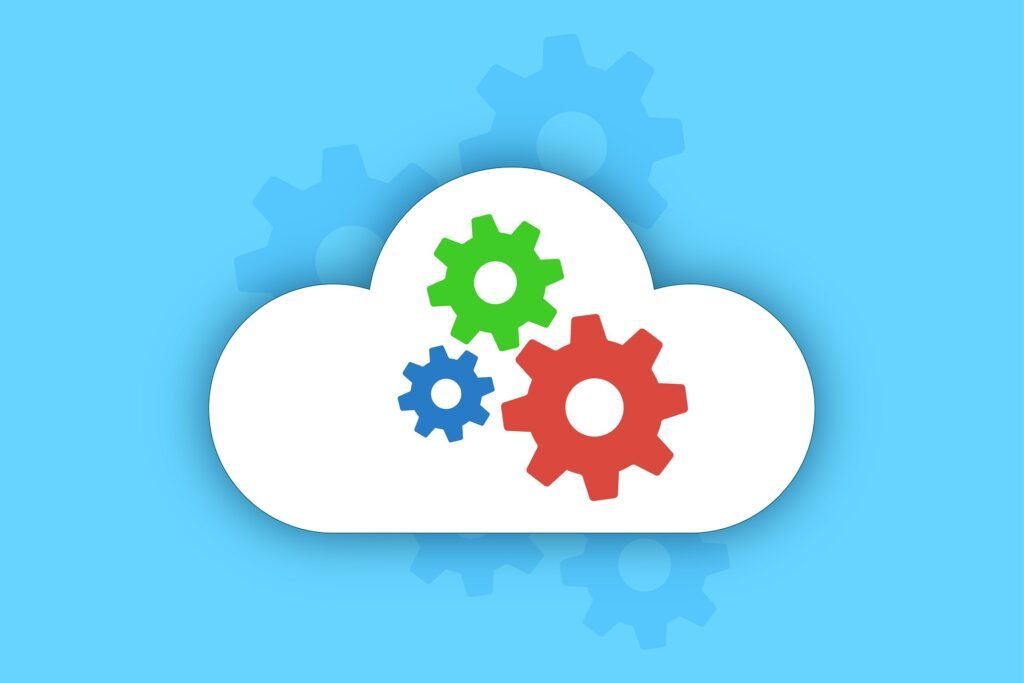Cloud computing is the transportation of computing services, including servers, storage, databases, networks, software, analytics, and intelligence, over the network (“the cloud”) to provide faster innovation, versatile resources, and economical scale.
Cloud computing is the on-demand delivery of IT resources over the net with pay-as-you-go pricing. rather than buying, owning, and maintaining physical knowledge centers and servers, you’ll access technology services, akin to computing power, storage, and databases.

Benefits of cloud computing.
Cloud computing could be a massive shift from the normal means businesses place confidence in IT resources. The following are seven common benefits organizations are turning to cloud computing services.
- Cost: Cloud computing eliminates the capital expense of shopping for hardware and packages and fixing and running on-site knowledge centers—the racks of servers, the continuous electricity for power and cooling, and therefore the IT specialists for managing the infrastructure. It adds up fast.
- Global scale: The benefits of cloud computing services embody the flexibility to scale elastically. In cloud speak, meaning delivering the proper quantity of IT resources—for example, a lot of or less computing power, storage, bandwidth—right once it’s required and from the right geographic location.
- Performance: The biggest cloud computing services run on a worldwide network of secure knowledge centers, that are typically upgraded to the most recent generation of fast and economical computing hardware. This offers several benefits over one company data center, still as reduced network latency for applications and larger economies of scale.
- Security: Many cloud service providers offer a comprehensive set of policies, technologies, and controls that strengthen your overall security posture and protect your data, applications, and infrastructure from potential threats.
- Speed: Most cloud computing offerings are supplied by self-provider and on-demand, so even sizeable quantities of computing sources may be provisioned in minutes, commonly with only a few mouse clicks, giving corporations a whole lot of flexibility and taking the strain off ability planning.
- Productivity: On-web website online datacenters commonly require plenty of “racking and stacking”—hardware setup, software program patching, and different time-ingesting IT control chores. Cloud computing gets rid of the want for a lot of those tasks, so IT groups can spend time on attaining extra crucial commercial enterprise goals.
- Reliability: Cloud computing makes information backup, catastrophe restoration, and commercial enterprise continuity less difficult and much less high-priced due to the fact information may be reflected at more than one redundant web website in the cloud provider’s network.
Types of cloud computing.
To decide the kind of cloud deployment or cloud computing architecture, that your cloud offerings can be carried out on. There are 3 one of a kind methods to install cloud offerings: a public cloud, a personal cloud, or a hybrid cloud.
- Public cloud: Public clouds are owned and operated through third-birthday birthday celebration cloud carrier providers, which supply their computing sources like servers and garages over the Internet. With a public cloud, all hardware, software, and different assisting infrastructure are owned and controlled through the cloud provider. You get entry to those offerings and manipulate your account with the use of an internet browser.
- Personal cloud: A private cloud refers to cloud computing sources used solely through a single enterprise or organization. A private cloud may be bodily placed withinside the company’s on-web web page facts center. Some businesses additionally pay third-celebration carrier companies to host their private cloud. A private cloud is one wherein the offerings and infrastructure are maintained on a private network.
- Hybrid computing: Hybrid clouds integrate public and private clouds, certain collectively via way of means of an era that lets statistics and packages be shared among them. By permitting statistics and packages to transport among non-public and public clouds, a hybrid cloud offers your enterprise extra flexibility, and greater deployment alternatives and enables optimize your current infrastructure, protection, and compliance.

Types of cloud service.
Cloud computing offerings 4 huge categories: infrastructure as a service (IaaS), platform as a service (PaaS), serverless, and software program as a service (SaaS). These are now and then known as the cloud computing stack.
- Infrastructure as a service(IaaS): The maximum primary class of cloud computing services. With IaaS, you hire IT infrastructure—servers and digital machines (VMs), storage, networks, and working systems—from a cloud issuer on a pay-as-you-move basis.
- Platform as a service(PaaS): Platform as a carrier refers to cloud computing offerings that deliver an on-call for surroundings for developing, testing, delivering, and handling software program applications. PaaS is designed to make it simpler for builders to fast create internet or cellular apps, without stressful approximately putting in place or handling the underlying infrastructure of servers, storage, network, and databases wished for development.
- Serverless Computing: Overlapping with PaaS, serverless computing specializes in constructing app capability without spending time always dealing with the servers and infrastructure required to do so. The cloud issuer handles the setup, capability planning, and server control for you. Serverless architectures are notably scalable and event-driven, simplest the use of sources while a particular feature or cause occurs.
- Software program as a service(SaaS): Software as a provider is a technique for turning in software.program packages over the Internet, on-demand, and generally on a subscription basis. With SaaS, cloud companies host and manipulate the software program software and underlying infrastructure and cope with any maintenance, like software program enhancements and safety patching. Users connect with the software over the Internet, typically with an internet browser on their phone, tablet, or PC.
Uses of cloud computing.
you operate an online service to ship an email, edit documents, watch films or TV, concentrate on music, play games, or shop images and different files, it’s miles possibly that cloud computing is making all of it feasible at the back of the scenes. The first cloud computing offerings are slightly a decade old, however already lots of organizations.
Here are some examples viable with cloud services from a cloud provider: Create cloud-native applications, Store, back up, and recover data, Stream audio, and video, Deliver software on demand, Test and build applications, Analyse data, and Embed intelligence.
Who uses cloud services?
There are numerous famous businesses internationally which have already migrated to the cloud surroundings. Some of the examples include,
Pinterest: Uses the AWS cloud surroundings to manipulate more than one petabyte of statistics that might be generated through its customers each day.
Spotify: Uses the AWS cloud surroundings to shop its sizable repository of songs.
Netflix: One of the biggest video streaming offerings, it makes use of AWS to permit customers to circulate indicates from everywhere withinside the world.
Expedia: Uses AWS cloud offerings to deal with surprisingly scalable infrastructure.
